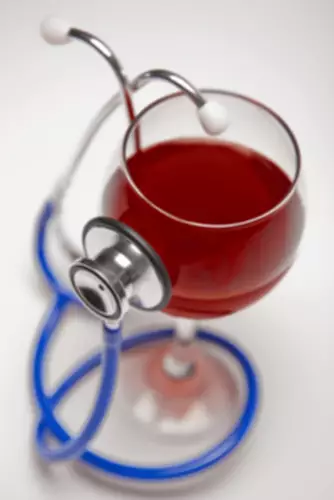Impaired Driving Facts Impaired Driving
Research shows a significant relationship between alcohol and both the perpetration and victimization of road rage. The American Psychological Association (APA) states that people who experience road rage are more likely to misuse alcohol or drugs. Aggression combined with impaired judgment and impulse control can be a recipe for road rage incidents. Alcohol impairs vision, reaction time, coordination, and judgment, all of which are essential to safe driving. DWI (driving while intoxicated) and DUI (driving under the influence) can be confusing terms for new and experienced motorists alike!
Drivers in the South Are the Most Likely to Use Their Phone While Driving

Even following that guide, you could still end up with a BAC over the legal limit. That’s because the alcohol metabolism rate can vary from person to person and setting to setting, depending on many factors (7). Here, we look at some of the most common reasons drunk driving occurs, according to research, and the steps you can take to prevent yourself from getting behind the wheel while impaired. The 45-to-49 age group had the highest percent, 37%, of drunk motorcycle riders killed in 2022. It is a priority for CBC to create products that are accessible to all in Canada including people with visual, hearing, motor and cognitive challenges.

National Roadside Surveys
Finally, in a comparison of alcohol test results, Zador (1991) found that each 0.02 increase in a driver’s BAC nearly doubled his or her risk of being in a single-vehicle fatal crash. This study examined alcohol test results of drivers killed in single-vehicle fatal crashes and compared these results with breath alcohol samples provided by 2,850 drivers stopped in the same States as part of a national roadside survey of drivers. To match driver fatalities to the roadside breath-testing exposure, the crash times, days, and roadway types were restricted to those used in the survey of drivers. The study found that, for all age and gender groupings, the likelihood of being a fatally injured driver was at least 9 times greater at BACs of 0.05 to 0.09 percent than at zero BAC. For each 0.02 percent increase in BAC, the fatal crash risk increased even more for drivers under age 21 and for female drivers. Getting behind the wheel of a vehicle – car, truck, motorcycle or any other motorized vehicle – after consuming alcohol is a serious crime.
- The foundation of NHTSA’s efforts on distracted driving and other risky driving behaviors is our partnership with the states and local police.
- Increasing blood alcohol concentrations (BACs) have been linked to increased crash risk.
- In a growing number of states, jail terms have become mandatory, even for first-time drunk driving offenders.
Oar Health Member Stories: Cutting Back on Alcohol
Alcohol affects your judgement, so you’d be in no position to evaluate your driving skills — or anyone else’s, for that matter — after drinking. Also, your driving skills can be affected even if you’re well under the legal limit, which could also result in legal problems. A BAC of .08 grams of alcohol per deciliter (g/dL) or higher is above the legal limit in the United States. Also, what you consider one drink could actually equate to more (sometimes ~a lot~ more) than what’s recognized as a standard drink.
In most states, license suspension is one of the mandatory penalties for a DUI conviction. In other words, the criminal court will impose a suspension period as a consequence of the conviction itself (regardless of whether or not the DMV imposed an administrative suspension). In all states, your sentence will include the loss of driving privileges for a period of time, even for a first-time DUI conviction. Some states offer a hardship license that allows you to drive to work or school during the time your license is revoked or suspended, but your driving privileges will still be drastically curtailed.

The personal consequences of drunk driving
In contrast, only 13 percent of deaths among motorists in large trucks were alcohol related (87/684) (NHTSA 2003a). The physical and mental effects of drinking alcohol have been proven to impair driving ability to the extent that a consequences of drinking and driving person entertains substantially greater risk of being involved in a fatal collision, should they choose to drive while impaired. Learning about DUI and DWI laws and penalties is a vital aspect of your driver’s education program.
Impairment and Drug and Alcohol Concentration for DUI Charges
Your access of/to and useof this site is subject to additionalSupplemental Terms. Lawyers who have received peer reviews after 2009 will display more detailed information, including practice areas, summary ratings, detailed numeric ratings and written feedback (if available). The Martindale-Hubbell Peer Review Ratings process is the gold standard due to its objectivity and comprehensiveness. Lawyers solicited for peer reviews include both those selected by the attorney being reviewed and lawyers independently selected by Martindale-Hubbell. All reviewers are verified as attorneys through Martindale-Hubbell’s extensive attorney database.
Slow Reaction Time
- The underage DUI laws of many states—including Washington, South Carolina, and Colorado—prohibit the operation of a vehicle with a BAC of .02% or more.
- As alcohol levels rise in a person’s system, the negative effects on the central nervous system increase.
- Furthermore, schools and colleges routinely reject scholarship students with previous DUI offenses.
- As shown in figure 1, in 1982 when NHTSA first made nationwide estimates, there were 26,172 alcohol-related traffic deaths.
National surveys also reveal that males and people ages 21 to 45 are the most likely to drive after drinking. Although drivers ages 16 to 20 accounted for only 12 million of 957 million drinking–driving trips in 1999, the average BAC among young drinking drivers was 0.10 percent, more than three times the average BAC level for all drinking drivers. Drivers under 21 in all States tend to drive with more passengers in their vehicles. Despite laws making it illegal to sell alcohol to people under 21 and for drivers that age to drive after any drinking, most people in this age group who drive after drinking are unaware that it is illegal to do so. Prevention campaigns in the United States began in earnest in the early 1980s (2). Back then, drunk driving accounted for about half of all crash fatalities in the nation.



Deixe uma resposta
Want to join the discussion?Feel free to contribute!